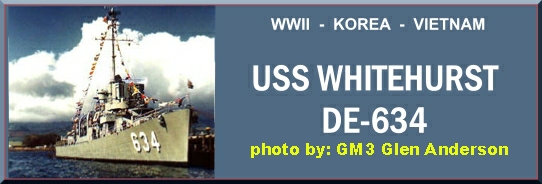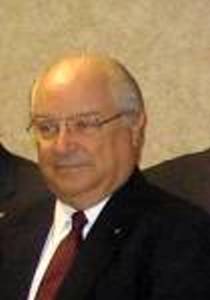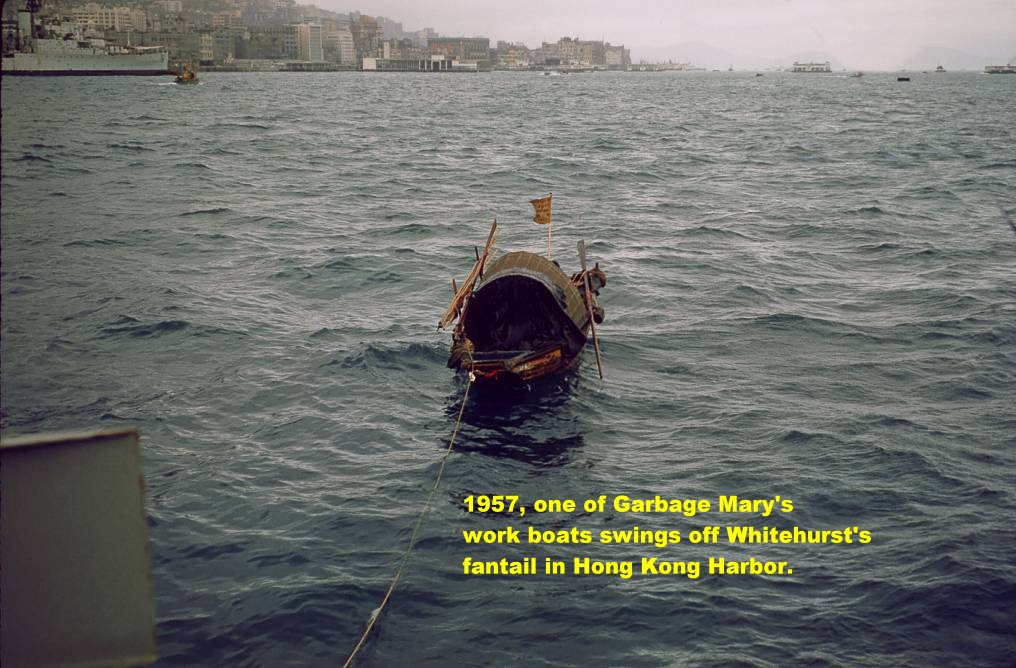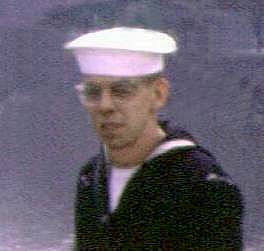
USS Whitehurst Logo by: Pat Stephens, Webmaster, DESA
|
Garbage Mary |
|
|
In the spring of 1957 USS Whitehurst (DE634) arrived in Hong Kong just before dawn one morning. She anchored in the center of the harbor and was immediately surrounded by small boats of many designs and descriptions. Soon an agreement had been made for a regular water taxi service every half hour to handle crew members leaving and returning to the ship. Then the other boats disbursed and Whitehurst swung quietly at anchor. But one distinctly shaped little boat, much smaller than the others, stood off the stern about twenty yards away. I was a newly minted Ensign, of only six months, and was in charge of the deck force at the time. I knew little of different countries, their ports and their customs. But our Captain, Lt Cdr. Walter Smith, seemingly knew it all. He had visited Hong Kong many times, both before and after World War II. He knew where the honest jewelers were and the best tailors and the finest restaurants and so on. He and the “old” Chiefs (in their 30s or early 40s), who had been to Hong Kong before, also knew why that little boat was sitting out there. About mid morning two cooks carried a large garbage can toward the stern. Immediately two girls (teens or early twenties) came from under a canopy on the little boat and maneuvered it up to Whitehurst’s transom. They had uncovered a compartment in the bow of their boat and the cooks carefully poured the breakfast garbage into it. OK, that’s the garbage collection routine around here. No problem! The cooks said that one of the Chiefs had arranged it, while talking to the girls over the side in the crowd of small boats just after we arrived. The garbage collection routine was repeated at lunch and again after dinner. Then the little boat headed for shore and I thought nothing more about it that evening. The next morning as I stepped out on deck, before the crew had assembled for Quarters, there was some considerable racket at the side of the ship. It sounded like someone banging and scraping on the hull. Before Quarters?? Work hadn’t started yet! Strange! As I stepped to the lifeline that same little boat came into view. I was looking down on the two girls working furiously. The canopy on their boat was gone. Where they had room on that tiny boat to store it I don’t know. The cockpit the girls had occupied the day before was covered over with interlocking planking to make one continuous platform and there they were working like crazy. For the rest of our stay (nine or ten days) that was the routine. The ships’ crew went on liberty. The two girls, who were up before anyone else, collected garbage, scraped off old paint, primed and painted the ship, cut in the water line, and relettered and renumbered everything from the main deck down to the water. The ship supplied the paint, primer and garbage. That is all. I also noticed some other things. Their little boat was beautifully made of dark wood (maybe mahogany) by a very skilled craftsman, varnished and polished to a high sheen. There was not a speck of dirt, paint chips or paint on it anywhere except while they were working. The girls paid absolutely no attention to the sailors’ cat calls and other attentions. On the other hand, when they headed their craft toward shore in the evening the temporary decking was gone, the boat was sparkling clean, the canopy was back up affording them some privacy and they were dressed in beautiful oriental silk dresses. In the late evening the boat would return and tie off aft for the night. It became obvious that the boat was the girl’s home. I have no idea where they slept among the canopy, decking, garbage, tools, clothes and other things they had stored on that thing but you never saw any evidence of clutter and everything not in immediate use was out of sight. The girls were not paid for their work. All they asked for was the ship’s garbage which they carefully sorted and took ashore to sell in the evening. What was not marketable they ate themselves. (Note: American Navy ships, and other military installations, must dispose of all food that has been prepared for, but not eaten at, the next meal. Leftovers cannot be saved and served again. This is required in order to prevent food poisoning of the crew or other problems which might disable or endanger the ship at sea or in critical times during war. Even with excellent planning and knowing exactly how many are on board to be fed, there is inevitably some quite edible “garbage” to be disposed of after each meal.) One evening, when I was the Command Duty Officer, the Captain went ashore and ran into two of our ship’s other officers. He said he was going to see an old friend and would they like to come along. Of course they went. The next morning one told me about his evening with the Captain’s friend - someone called “Garbage Mary.” She sounded fascinating and, 50+ years later, I still remember what I heard. Apparently when Mary was a young girl she was an orphan living on the streets of Hong Kong. She had no one to support her. Somehow she survived and eventually hooked up with some sailors from an American navy ship in the harbor. She became aware that the ship was throwing out what to her was a large amount of food. She asked if she could have some of it to eat. That worked for her again and again until the ship left port. No dummy, she worked this thing whenever she saw an American navy ship in port. Eventually she was asked to do some work in return for these handouts. She began working alongside the sailors who were painting their ships. She learned to do it very well. As time passed Mary was eating regularly and starting to make some money as she began to use her new found trade to service other ships in the harbor, not just the Americans. She then acquired her own painting equipment and needed a boat of her own to store it in and to use as a painting platform. That would also afford her an opportunity to get off the streets. She soon was living on her first boat, becoming one of Hong Kong’s famous “Boat People.” After a few years Mary had more business than she could handle. She also had some ideas about a boat design which would better meet her needs as a work platform, a storage place and a home. She had a boat made to her own design which worked better than she had hoped. Soon she began looking for and easily found others who were happy to join her, work and get off the streets. Eventually Mary became the owner/manager of a thriving business. She acquired a fleet of little boats, each with a pair of girls trained to do excellent work. Mary only hired orphans from the streets. She insisted that each girl pledge not to prostitute herself and never to date or otherwise have anything to do with a sailor. Any violation of these rules or evidence of slow or poor quality work caused immediate dismissal. Mary was a tough task master but if you kept your nose clean and provided a day’s work for your pay she was also a good and generous friend to the girls who had come from the same background that she had. Mary provided each team with a boat to live on and equipment for the work. She owned these and would not sell them. She enforced quality control over the business in this way. The girls came ashore every evening with their garbage to sell. Mary took a cut of the proceeds but the girls accumulated plenty of money for themselves and eventually had enough to leave for some other life if they wished. When my shipmates met Mary she seemed somewhat older than Captain Smith, maybe in her mid to late forties. (If that estimate is accurate she would be about 100 by now and is probably no longer living.) She greeted Captain Smith warmly and seemed quite happy to see him again. She was living in her large house high up on the side of the mountain on Victoria Island, overlooking Hong Kong City, the harbor, and Kowloon across the bay. She was described as cordial with the strangers the Captain brought with him, easy to laugh, enjoyed having company and telling tales of her past and the rise to her wealthy position. Physically she was described as overweight, beautifully dressed and festooned with many, obviously extremely valuable, rings on each and every finger. Maybe she just didn’t trust banks. The little boat with the two girls that painted the Whitehurst was one of Mary’s. The work they did was far superior to what our sailors would have done. The hull of the ship did not need to be painted again during the remaining eighteen months that I was on board. With the ravages of the sea and rubbing against piers and the lesser quality of paint available to us then that was remarkable. (By 1959 we were using the “new stuff” called Rustoleum - a big improvement.) Subsequent to our 1957 visit it became known that Mary’s real name was Mary Soo. She was later known as the “Garbage Queen of Hong Kong”. I think the original “Garbage Mary” describes it better and is more personable. Warren Blakely
|
|
|
|
|
|
Tim Dorgan's account of
Whitehurst's 1962 Business with Mary Soo
It was in May of 1962 when the Whitehurst was on patrol
and training missions off of Viet Nam when we were ordered to take R
& R in Hong Kong for seven days, this included transit time. The
Navy at that time was not generous about goof off time.
We pulled into Hong Kong Harbor on a Wednesday afternoon, it was
drizzling and cold, we had been used to the Philippines and Viet Nam
weather. After we had anchored, one the first things I noticed was a
number of small boats that approached the ship. I assume that some
of the people had permission to come aboard because they did.
Nothing else happened that evening except some of the Officers and
the Captain went ashore.
The next morning, well
before chow, we had several young Asian ladies come aboard, we were
advised that they would be working on the mess decks and on painting
the hull. On the mess deck there were three garbage cans set by the
scullery, a young Asian lady would take trays from the crew and
separate the left-overs into the garbage cans, meat, vegetables &
breads. After breakfast the three garbage cans were taken to the
fantail and lowered to a small boat then brought back aboard. The
number of cans stayed the same for Dinner and Supper and this
procedure went on for Thursday, Friday, Saturday and Sunday.
As I went about my duties
or left or returned on the liberty boat I watched the ladies and how
they worked. If there were any scale spots or rust showing they
would chip down to bare steel and apply primer. Not only did they
paint the hull they painted the main deck and the 01 level. {They
didn't paint the bridge that was left for the Operations Department
crew to handle, including Kronenburgh's leg, but that's another
story.} They never used a brush, they instead used rags, which like
the paint were furnished by the Navy. They worked fast and very well
and were finished by Saturday, they even repainted the hull number
on the bow. The job they did was remarkable and I was awed by how
fast they worked. They would leave the ship each evening and return
in the morning, a small number of the ladies remained Sunday to
collect the garbage for the day. We got underway Monday and returned
to patrol and training duty in Viet Nam.
Tim Dorgan
|
|
|
A few links with further information about Mary Soo, courtesy of
Ken Baroa, RD2 USS Whitehurst 1955 -1958. The photos below the
links were taken from these websites. http://www.aspecialdayguide.com/wells/sin.htm http://monkeytales.net/39/hong-kongs-mary-soo http://www.yokosukasailor.com/profiles/blogs/mary-soo-and-the-captain?xg_source=activity http://schoonermoon.com/tag/hong-kong-mary/ http://uss-king.com/smf/index.php?action=printpage;topic=77.0
note: The name "Garbage Mary" is hard to find on the Internet. That is
what she was called by |
|
|
|
|
|
|
|
WWII
Era | Korea War &
'50s | Viet Nam & 60s |
Reunions |
All Links Page |
Search & Rescue
Memorial |
Poetry |
Enemy Below |
Taps List |
Photos/Armament |
History |
Crews Index |
Home



